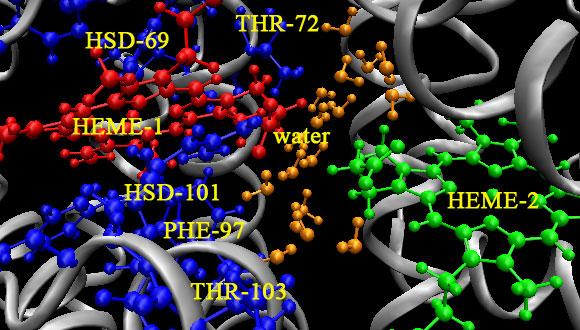Chemical Physics PhD Seminar: Understanding and controlling the formation of metal nanowire films produced by seeded growth
Muriel E. Layani-Tzadka, TAU
Under the supervision of Professor Gil Markovich
Abstract:
The search for understanding and controlling the synthesis of metal nanowires and nanorods has attracted vast attention in recent years. Such nanostructures may have a major role in the fabrication of nanoscale electronic devices. One of the important applications of controllable deposition of metal nanowires is the fabrication of transparent electrodes (TEs).
We have developed a unique deposition method of nanowires based TEs which combines inkjet printing of functional materials with an intricate self-assembly process. Gold−silver nanowire (NW) mesh films were produced by a sequential deposition process, in which a small metal seed nanoparticle film was deposited at desired areas by inkjet printing, followed by coating with a thin film of NW growth solution.
In collaboration with the group of Dr. Sharly Fleischer, we have succeeded to utilize time-domain Terahertz (THz) reflectivity measurements for characterizing the surface conductivity of our TEs. We find good correspondence between the film conductivity and the THz-field reflectivity that provide uniquely desirable means for non-destructive, contactless conductivity measurements of large area NW-based-TEs.
We have also developed a unique alignment technique of the metal NWs in a laminar flow system via self-assembly of CTAB (cetyltrimethylammonium bromide) surfactant under shear flow. In this process the growth and alignment of the NWs occurred simultaneously. The obtained NWs presented atypical light polarization characteristics in the visible range due to plasmonic effects, which were opposite to the polarization characteristics of regular wire-grid polarizers.
Finally, in collaboration with the group of Dr. Amit Sitt, we have developed a unique silver NW growth procedure, on thick (tens of microns) and very thin (a few microns) PLGA (poly (lactic-co-glycolic acid)) which enabled us to obtain conducting flexible fibers. Our unique growth procedure has enabled us to investigate the relation between the persistence length of the CTAB tubules formed in our growth solution and the spatial organization of the obtained NWs on the surface of the fibers. We have also succeeded to deposit our NWs on a PLGA fabric-like surface.


